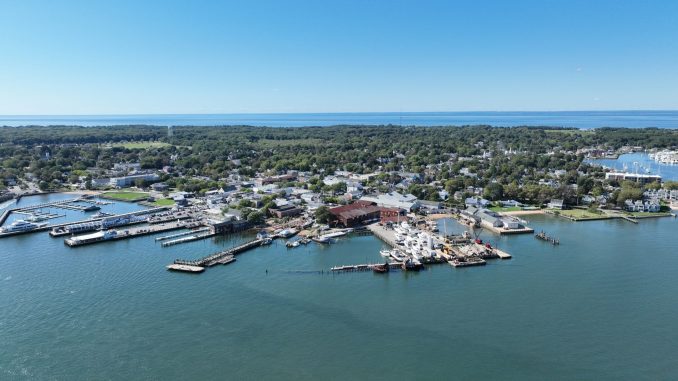
MATTITUCK
‘Imbalance’ on eminent domain
Once again, The Suffolk Times disappoints. The article “Southold wins eminent domain dispute” (Oct. 31) frames the resolution of the Brinkmann family’s years-long legal battle against Southold Town as if the “family” were somehow valued members of our community, rather than up-island retailers. New York City-based contributing editor Chris Francescani has produced a puff piece on the Brinkmann brothers, giving them a platform for continuing their claim of being wrongfully dispossessed of their property. He quotes their statement that “government shouldn’t be able to get away with these abuses of power …” without mentioning that our elected officials acted in accordance with the town’s Comprehensive Plan and the wishes of our community, not in some arbitrary overreach of government authority. State and federal courts ruled against the Brinkmanns, affirming the town’s decision and validating the community’s position.
Your article omits the significant community attendance and strong outpouring of disapproval at two major informational meetings with the Brinkmann family hosted by the Mattituck-Laurel Civic Association. Despite overwhelming public opposition, the Brinkmanns persisted in claiming their proposed 20,000-square-foot retail operation on the corner of Main Road and New Suffolk Avenue would be a boon to the community, when it was plain to see that the inevitability of large commercial tractor-trailers making deliveries — alongside additional traffic to and from the store — would’ve made an already overburdened, highly trafficked area an absolute nightmare.
Lastly, while you included a photo of the Brinkmann brothers, where were the images from the packed community meetings — or even a reference to your own articles from that time, which clearly documented public disapproval? The omission of these details reveals a concerning lack of historical continuity in our local paper of record, and does a disservice to readers seeking a balanced account of the issue.
I hope future coverage on matters of such importance to the community will offer a more balanced view in future.
Jean Schweibish
GREENPORT
My turn on Sandy Beach
I thought, as a member of Greenport Village’s Historic Commission, I could add some clarity as to what a historic district is and isn’t.
A historic district is a group of contiguous structures that, when taken as a whole, meet certain defined criteria as significant. There are three levels of historic recognition: national, state and local. Greenport has had a national and state district since 1984 and a local district since 1988. There are currently approximately 264 structures in the district and 836 outside of the district.
There is absolutely no governance that comes with being on the national or state registers. None. Owners are completely free to change all aspects of their structures. Being on the national and state historic registers are the highest recognition of significance in the United States. Among other benefits, it gives pride of place by recognizing the accomplishments of our past. Also, an important part of this recognition is eligibility to apply for state and federal tax rebates for renovations — 20% state rebate for homeowners and up to 50% in federal and state tax rebates for commercial properties. There are also grants that come up now and again that historic districts are eligible for.
Governance comes at the local level and only at the local level. For Greenport, it is called Chapter 76 — and the code can easily be found on the village website. Chapter 76 allows the Historic Commission to review proposed changes to the exterior of a property and also allows for review of the appropriateness of demolition. Upon approval, the commission issues a Certificate of Appropriateness, which is required to receive a building permit within the historic district. Unlike the national and state registers, there is no public money eligibility received by being on a local register.
Greenport’s historic homes and buildings give our streets personality and help to tell the story of Greenport’s past. National, state and local historic districts protect this heritage.
Jan Claudio
JAMESPORT
Sign game continues
A new wrinkle has been added to the nonsensical switching and stealing of lawn signs this election season. I saw 2 handwritten white signs on two utility poles on my street. The first one said “Think Pray Vote” — a nice sentiment. Then on the next pole: “Vote no on Prop 1.”
These signs were folded and nailed to the poles, so I decided to take a closer look. They were stolen Sarah Anker signs!
No matter the sentiment, it’s especially reprehensible to steal someone’s message and post your own. Buy your own damn signs and put them wherever you want! No stealing!
Vinny Spampinato

